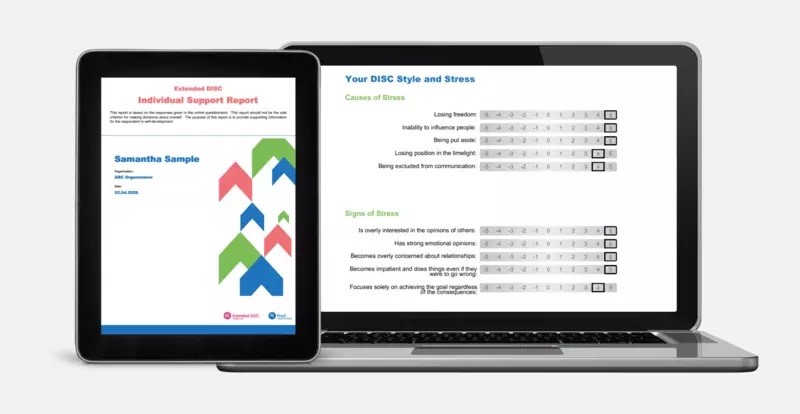Change Management
Achieving resiliency in the face of disruptive change.
Disruption, Resiliency and Change Management
Recent events have highlighted the fact that disruption is a constant reality and organizations must take steps to build resiliency into their workforce.
When thinking about change management, we can define resiliency as the ability to respond swiftly and bounce back from change. It involves focusing on the positive aspects of the change rather than dwelling on negative emotions.
Reactions to Change
Individuals react and respond differently to change. One highly informative initiative is to match results from the Extended DISC® Change Management DNA reports with classical change reaction classifications.
The Innovators
These are likely to be the promoters of the change episode. They are committed to continuous improvement.
This classification aligns closely to results that fall in the D-Style quadrant of the Extended DISC® Diamond.
The Early Adopters
These individuals play a key role in change management initiatives as they are the first to embrace innovation and change.
They are happy to opt in even before all the details of the change initiative is available and why it is necessary. They welcome change either because they immediately see the benefits or perhaps because they prefer variety to routine.
The Early Majority
These individuals are those who are influenced by initiators and early adopters and who prefer to get ahead of the change rather than be upended by it.
This category fits into one of the nuanced profiles produced by Extended DISC® on the FinxS Platform. I/S Styles are likely candidates.
The Late Majority
These individuals are more cautious. They prefer to be fully informed about the change and its implications. They are not keen to be guinea pigs. Seeing the change process in action would be ideal.
The Late Adopters
These can be seen as stragglers in the change process. They come on board late and not always willingly. They are not easily convinced of the value of change, its timing or the value in which it is being implemented. However, they can be convinced to accept the change.
Late Adopters are likely to show up in the S or C Style quadrants of the Extended DISC® Diamond. There is no malice. They just need to ensure that the change is going to work.
The Diehards
This where the change initiative meets a bottleneck or roadblock. They resist the change. They may never really get engaged with the change initiative. They may mount active resistance and correction action may need to be taken to negate their impact.
This type of behaviour is driven more by a perception of the facts than by the behavioural preference of the individual. While the resistance mindset might be resident in any of the 360 separate Extended DISC® behavioural profiles, taking action about it is likely to come from individuals in the C or D Style quadrants.

Buy In
Change management initiatives succeed or fail in proportion to the degree of buy in that is achieved. This is required from those who lead teams and from the team members.
Understanding the make-up of teams at all levels provides a powerful platform for designing, planning and rolling out change initiatives. Sticking points can be predicted and communication strategies can be fine tuned.
Another benefit of conducting Extended DISC® Change Management assessments in advance is that you can more easily identify pockets of support, early adoption and resistance and take appropriate action.
Make Extended DISC® Change Management Assessments an integral part of your change management initiatives for best results.

Data-driven Change Management
- Use the FinxS® Competency Library to select directly relevant change competencies.
- Use Extended DISC® Team Reports to guide your change management strategy.
- Gain clarity as to sources of early adoption and empower them.
- Pay attention to likely sources of resistance and neutralize them.
Actionable Insights from the Extended DISC® Change Management Assessment
- Identify items from the Likert scales that suggest possible areas of discomfort .
- Takes steps to address areas of concern before, during and after implementation.
- Communicate in the preferred behavioural language of individuals – multi-dimensional.


Leading the Change Management Process
- Be open and transparent. Trust is the key to getting buy in.
- Stick to a carefully developed communication plan – including scripts.
- Ensure that you have alternatives for different stages so that you bake in flexibility.
- Communicate frequently and work to get in front of issues quickly.
- Exude confidence. Demonstrate that you believe in the change initiative.
- Think hard before you abandon the change initiative. That decision has implications for the future.
